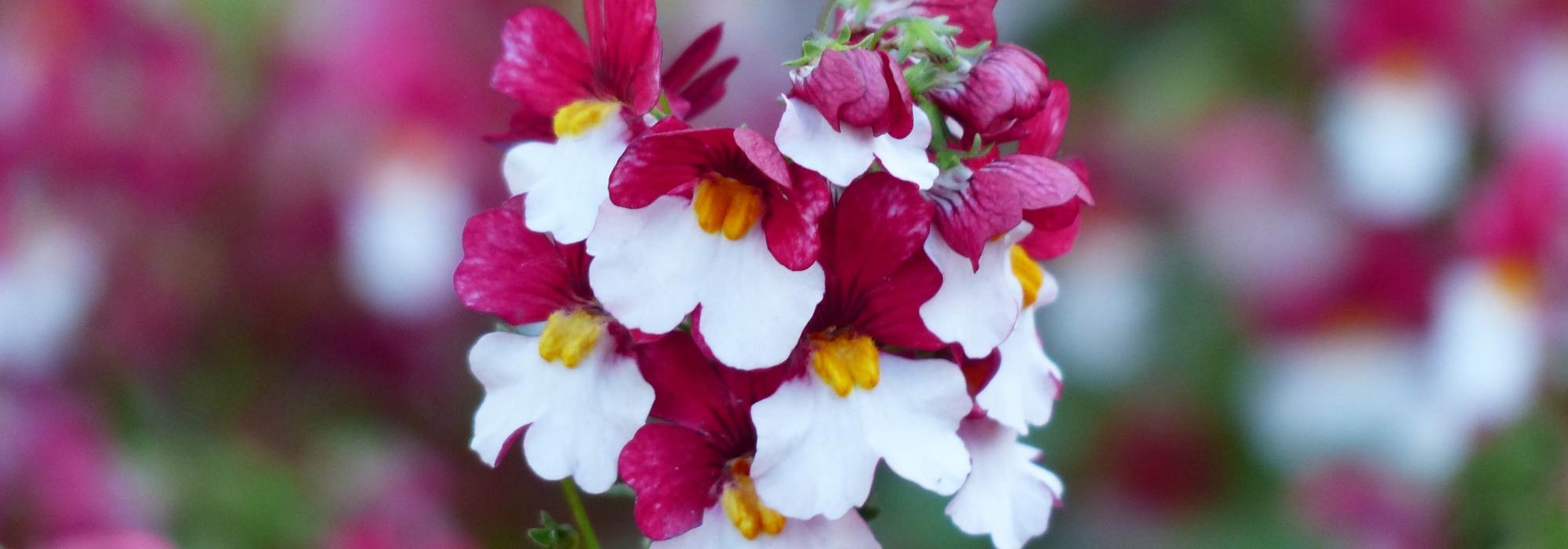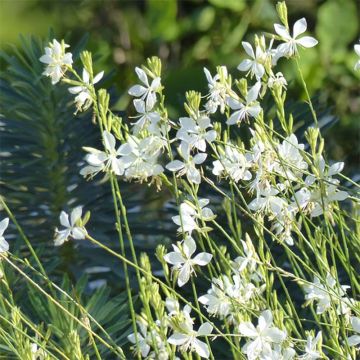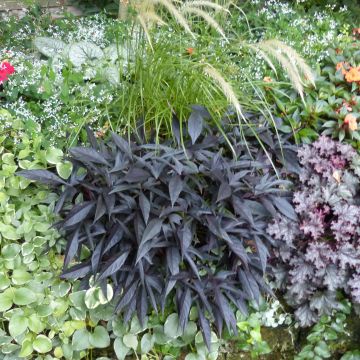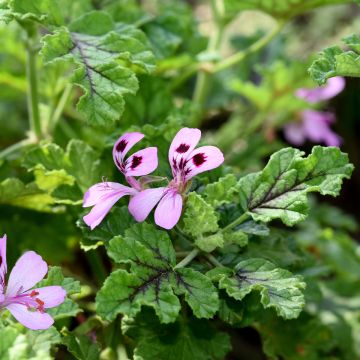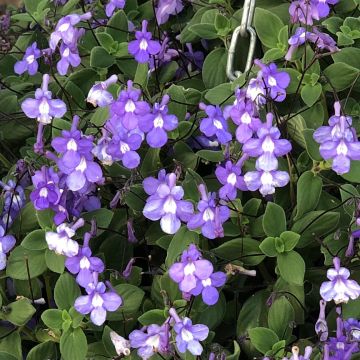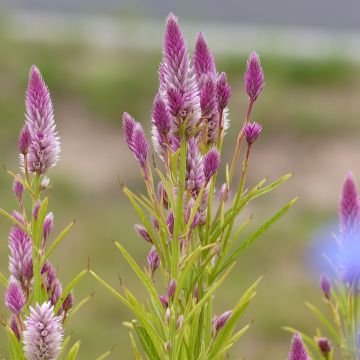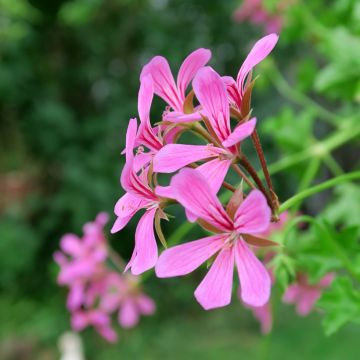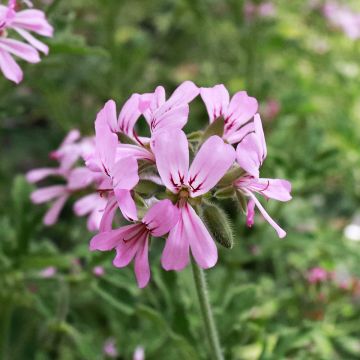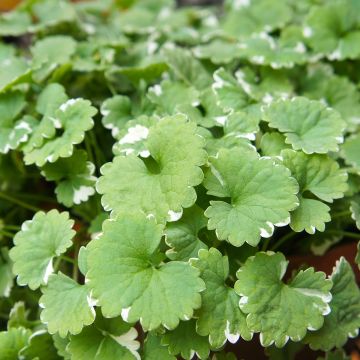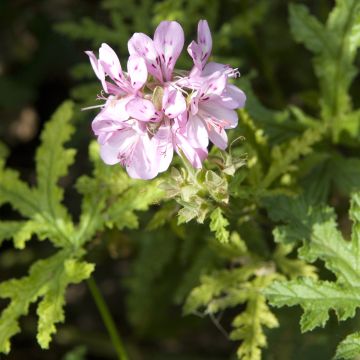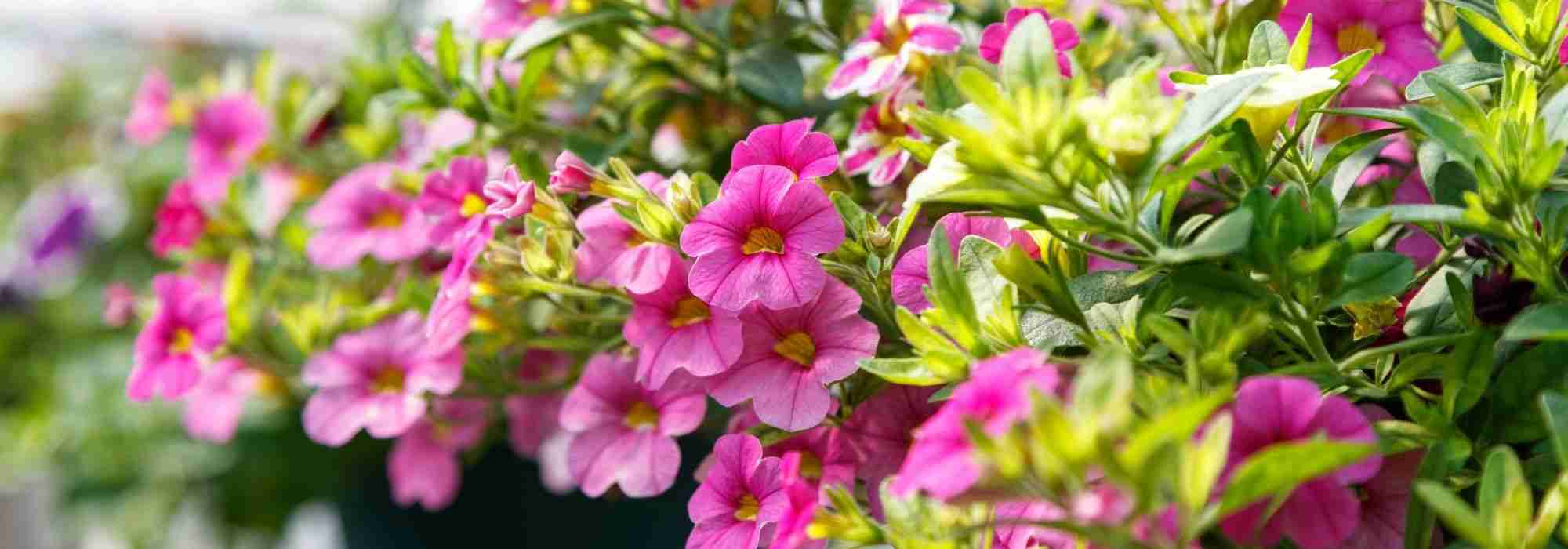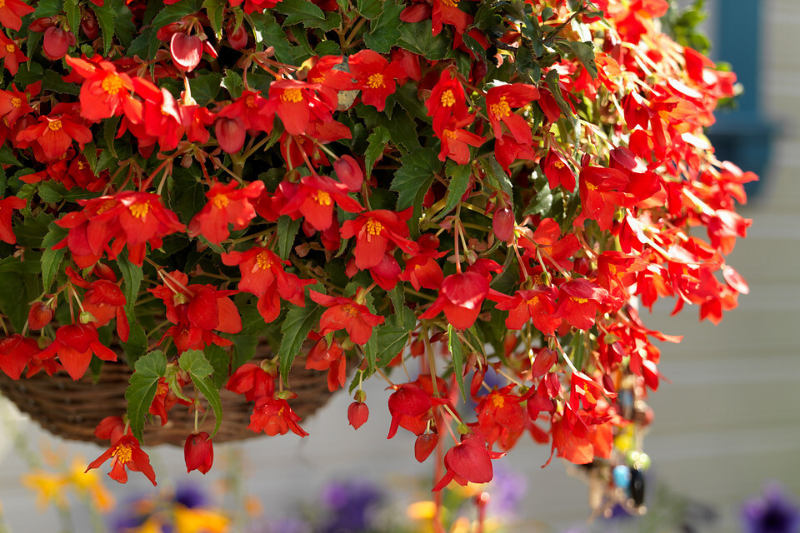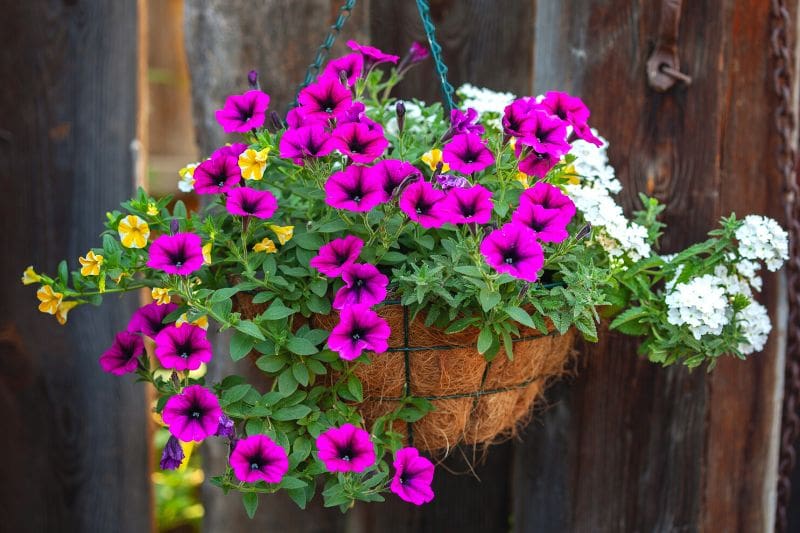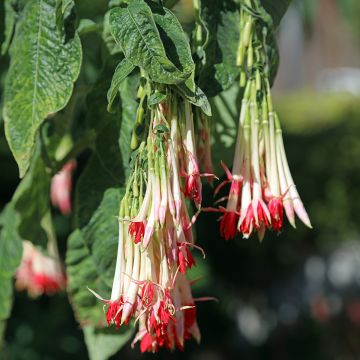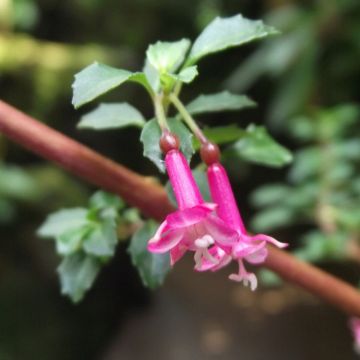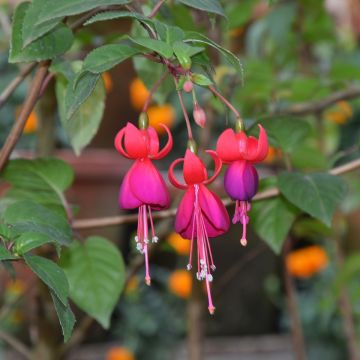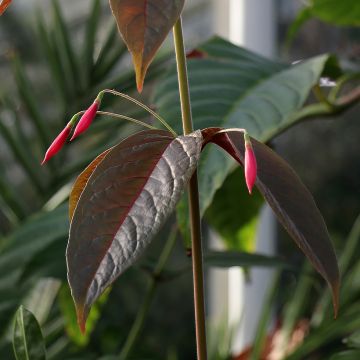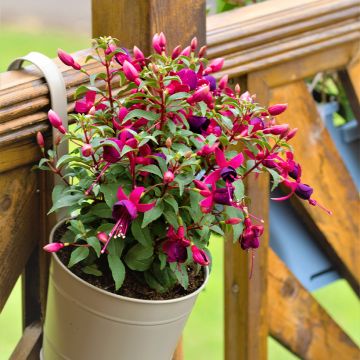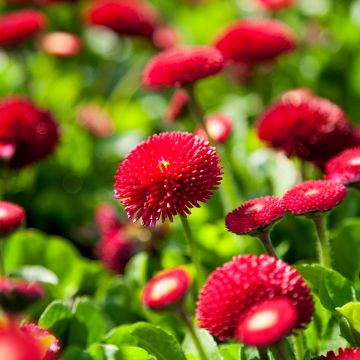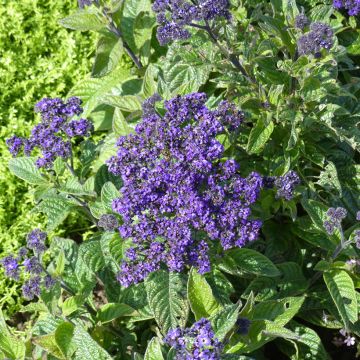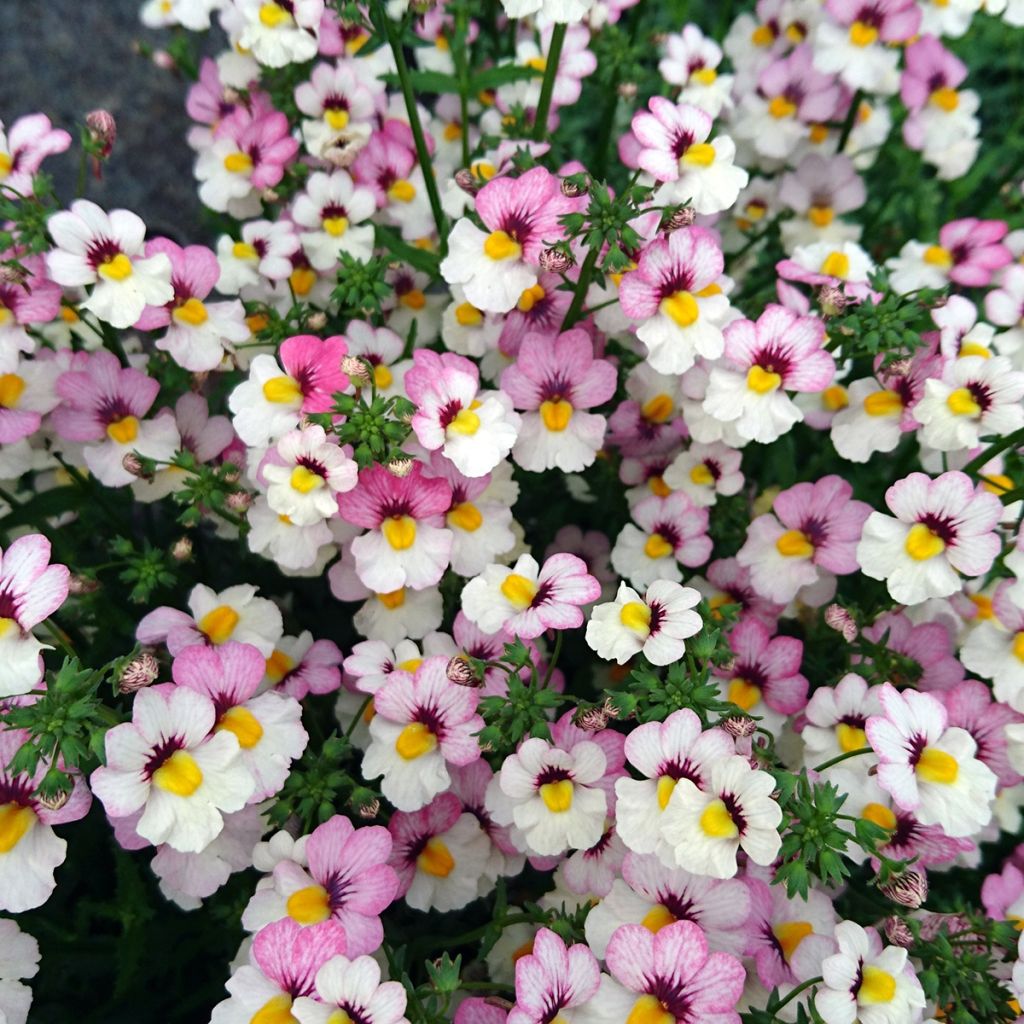

Némésia Sunsatia Plus Lychee
Nemesia strumosa Sunsatia Plus Lychee
Nemesia strumosa Sunsatia Plus Lychee
Cape Jewels, Baby Snapdragon
Mini plants in good shape. Looks promising to me.
Badette, 26/03/2024
Special offer!
Receive a €20 voucher for any order over €90 (excluding delivery costs, credit notes, and plastic-free options)!
1- Add your favorite plants to your cart.
2- Once you have reached €90, confirm your order (you can even choose the delivery date!).
3- As soon as your order is shipped, you will receive an email containing your voucher code, valid for 3 months (90 days).
Your voucher is unique and can only be used once, for any order with a minimum value of €20, excluding delivery costs.
Can be combined with other current offers, non-divisible and non-refundable.
Home or relay delivery (depending on size and destination)
Schedule delivery date,
and select date in basket
This plant carries a 6 months recovery warranty
More information
We guarantee the quality of our plants for a full growing cycle, and will replace at our expense any plant that fails to recover under normal climatic and planting conditions.

Would this plant suit my garden?
Set up your Plantfit profile →
Description
The 'Sunsatia Plus Lychee' Nemesia is a recent variety with soft and fruity colouring, unprecedented in the Sunsatia Plus series. Its large bicoloured white and lavender pink corollas, slightly fragrant, bloom in abundance on dense and semi-trailing vegetation, creating a prodigious effect in hanging baskets and containers. This remarkable annual plant is capable of flowering from late winter to autumn. Its well-branched growth gives it good resistance to bad weather. It should be placed in a gently sunny position, in fertile and well-drained soil.
Nemesia strumosa, also known as African Nemesia, is an annual plant from the Scrophulariaceae family, native to South Africa, with rapid growth. It is the origin of many horticultural varieties, whose performance in terms of floriferousness and durability is constantly improving. The Sunsatia Plus series is one of these successful creations, offering continuous flowering from May to October on highly branched plants.
The 'Lychee' variety, still relatively uncommon in France, displays large symmetrical flowers with undulating petals, half of which are light lavender pink mottled with very dark purple at the base, while the other half sports a brilliant white. They are centred on a golden yellow throat that can be seen from afar. Gathered at the end of sturdy, leafy stems, these flowers adorn a graceful clump measuring 25 to 45 cm (10 to 18in) in height and 30 to 50 cm (12 to 20in) in diameter, with a compact habit. The foliage consists of small, lanceolate, highly toothed, grey-green leaves. This well-branched plant is resistant to wind and rain. It is hardy to about -3°C (26.6°F).
From the first days of spring, the vibrant colours of nemesias illuminate the flowerbeds of cities and villages. On terraces and in gardens these fresh plants, with their graceful, bushy and trailing habit, are perfect for hanging baskets, balcony planters, any type of container, and even perennial borders, preferably in full sun. They are easy to grow in the garden and provide spectacular results when planted in containers. Use them also as edging, in mixed colours or in combination with geraniums, lobelias, verbenas, petunias, etc.
Note: Please be aware that our plug plants are professional products reserved for experienced gardeners: upon receipt, repot and store them under cover (veranda, greenhouse, cold frame) at a temperature above 14°C (57.2°F) for a few weeks before being installed outdoors once the risk of frost has passed.
Nemesia strumosa Sunsatia Plus Lychee in pictures
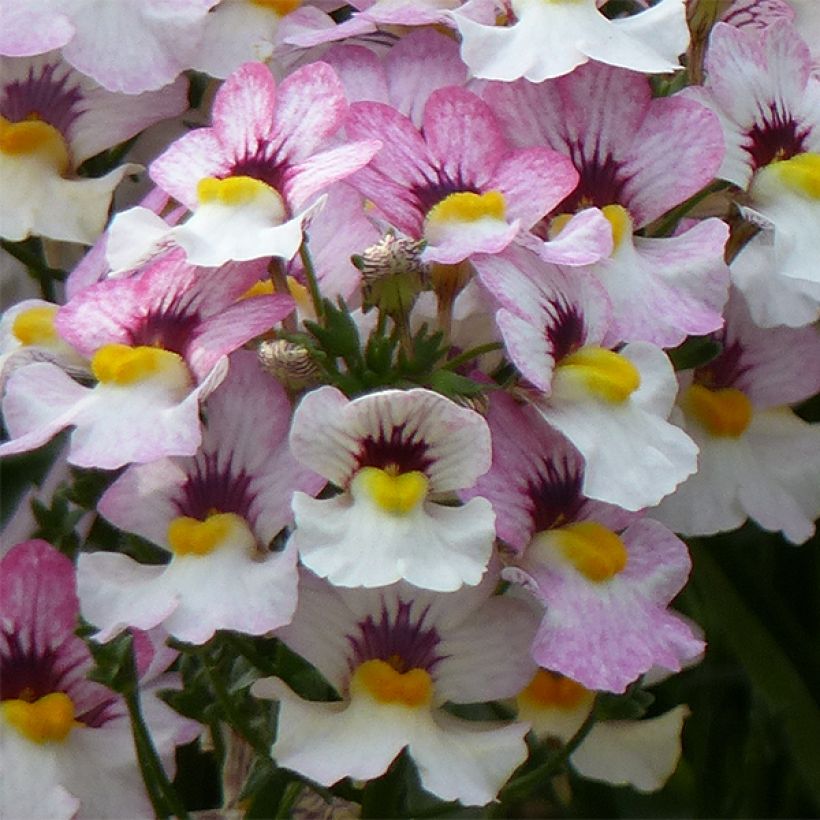

Flowering
Foliage
Plant habit
Botanical data
Nemesia
strumosa
Sunsatia Plus Lychee
Scophulariaceae
Cape Jewels, Baby Snapdragon
Cultivar or hybrid
Other Annuals A to Z
View all →Planting and care
Plant your Sunsatia Nemesias in a sunny location or possibly in partial shade. They need a light, fertile, and humus-rich soil and appreciate a fertiliser input. They do not tolerate high temperatures combined with significant humidity very well. You can plant your nemesias in a flowerbed or in pots. In pots, these young plants should be regularly watered. Planting should be done after the last frost, in spring. In summer, during periods of high heat, do not hesitate to prune the plant severely (10-15 cm (4-6in) from the base) between flowerings to encourage the formation of new flowering shoots.
Planting period
Intended location
Care
Planting & care advice
-
, onOrder confirmed
Reply from on Promesse de fleurs
Similar products
Haven't found what you were looking for?
Hardiness is the lowest winter temperature a plant can endure without suffering serious damage or even dying. However, hardiness is affected by location (a sheltered area, such as a patio), protection (winter cover) and soil type (hardiness is improved by well-drained soil).

Photo Sharing Terms & Conditions
In order to encourage gardeners to interact and share their experiences, Promesse de fleurs offers various media enabling content to be uploaded onto its Site - in particular via the ‘Photo sharing’ module.
The User agrees to refrain from:
- Posting any content that is illegal, prejudicial, insulting, racist, inciteful to hatred, revisionist, contrary to public decency, that infringes on privacy or on the privacy rights of third parties, in particular the publicity rights of persons and goods, intellectual property rights, or the right to privacy.
- Submitting content on behalf of a third party;
- Impersonate the identity of a third party and/or publish any personal information about a third party;
In general, the User undertakes to refrain from any unethical behaviour.
All Content (in particular text, comments, files, images, photos, videos, creative works, etc.), which may be subject to property or intellectual property rights, image or other private rights, shall remain the property of the User, subject to the limited rights granted by the terms of the licence granted by Promesse de fleurs as stated below. Users are at liberty to publish or not to publish such Content on the Site, notably via the ‘Photo Sharing’ facility, and accept that this Content shall be made public and freely accessible, notably on the Internet.
Users further acknowledge, undertake to have ,and guarantee that they hold all necessary rights and permissions to publish such material on the Site, in particular with regard to the legislation in force pertaining to any privacy, property, intellectual property, image, or contractual rights, or rights of any other nature. By publishing such Content on the Site, Users acknowledge accepting full liability as publishers of the Content within the meaning of the law, and grant Promesse de fleurs, free of charge, an inclusive, worldwide licence for the said Content for the entire duration of its publication, including all reproduction, representation, up/downloading, displaying, performing, transmission, and storage rights.
Users also grant permission for their name to be linked to the Content and accept that this link may not always be made available.
By engaging in posting material, Users consent to their Content becoming automatically accessible on the Internet, in particular on other sites and/or blogs and/or web pages of the Promesse de fleurs site, including in particular social pages and the Promesse de fleurs catalogue.
Users may secure the removal of entrusted content free of charge by issuing a simple request via our contact form.
The flowering period indicated on our website applies to countries and regions located in USDA zone 8 (France, the United Kingdom, Ireland, the Netherlands, etc.)
It will vary according to where you live:
- In zones 9 to 10 (Italy, Spain, Greece, etc.), flowering will occur about 2 to 4 weeks earlier.
- In zones 6 to 7 (Germany, Poland, Slovenia, and lower mountainous regions), flowering will be delayed by 2 to 3 weeks.
- In zone 5 (Central Europe, Scandinavia), blooming will be delayed by 3 to 5 weeks.
In temperate climates, pruning of spring-flowering shrubs (forsythia, spireas, etc.) should be done just after flowering.
Pruning of summer-flowering shrubs (Indian Lilac, Perovskia, etc.) can be done in winter or spring.
In cold regions as well as with frost-sensitive plants, avoid pruning too early when severe frosts may still occur.
The planting period indicated on our website applies to countries and regions located in USDA zone 8 (France, United Kingdom, Ireland, Netherlands).
It will vary according to where you live:
- In Mediterranean zones (Marseille, Madrid, Milan, etc.), autumn and winter are the best planting periods.
- In continental zones (Strasbourg, Munich, Vienna, etc.), delay planting by 2 to 3 weeks in spring and bring it forward by 2 to 4 weeks in autumn.
- In mountainous regions (the Alps, Pyrenees, Carpathians, etc.), it is best to plant in late spring (May-June) or late summer (August-September).
The harvesting period indicated on our website applies to countries and regions in USDA zone 8 (France, England, Ireland, the Netherlands).
In colder areas (Scandinavia, Poland, Austria...) fruit and vegetable harvests are likely to be delayed by 3-4 weeks.
In warmer areas (Italy, Spain, Greece, etc.), harvesting will probably take place earlier, depending on weather conditions.
The sowing periods indicated on our website apply to countries and regions within USDA Zone 8 (France, UK, Ireland, Netherlands).
In colder areas (Scandinavia, Poland, Austria...), delay any outdoor sowing by 3-4 weeks, or sow under glass.
In warmer climes (Italy, Spain, Greece, etc.), bring outdoor sowing forward by a few weeks.






























